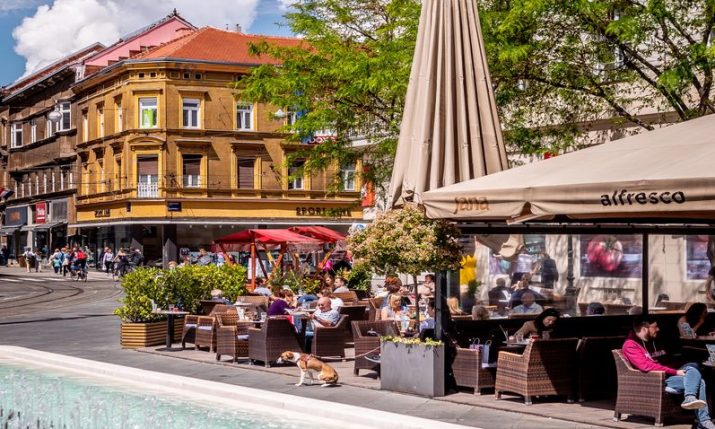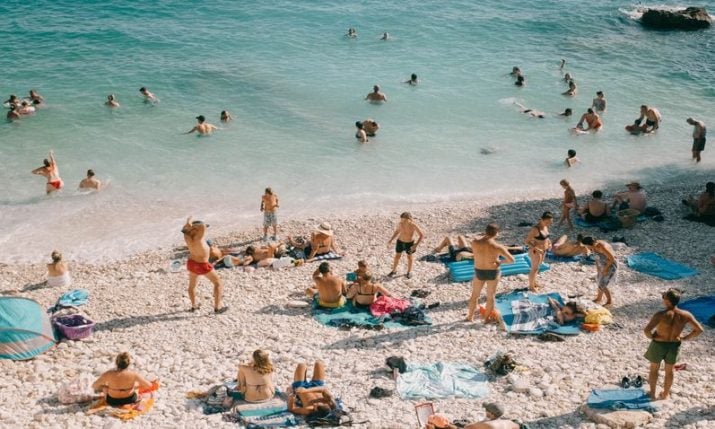Croatians go back to coffee at cafes on Monday – what it will look like
- by croatiaweek
- in News

ZAGREB, 8 May 2020 – Coffee at the cafe and its importance in the Croatian way of life has been well documented. That key part of Croatian life has been taken away for more than six weeks.
In a survey, Croatians have said that not being able to go for a ‘coffee’ is one of the main things they are missing during the lockdown, and going for one with friends will be one of the first things they do once things return to normal.
Well from Monday, 11 May, they will have that opportunity as cafes, restaurants and bars across the country are allowed to open. Whilst going for ‘coffee’ will be allowed, it will not be how it was in the past. Below are the conditions cafes, restaurants and other hospitality facilities must follow as directed by the Croatian Public Health Institute (HZJZ).
Opening hours
Cafes, bars and restaurants are able to open from 6 a.m. until 11 p.m. In the facilities, tables are to be kept empty until guests arrive, and utensils are served only when guests sit down. It is recommended to display the menus at the entrance or other visible place in an appropriately plasticised form, ie it is recommended to remove the classic forms of the menu. It is possible to give visitors an oral recommendation or in some other acceptable way to express the offer of food and drinks.
Limits on the number of visitors
The limit on the number of visitors can be achieved by making available the number of tables that can be set so that the tables are 1.5 metres apart. The entry of guests is regulated in such a way that the next visitor or group of visitors can enter only when the previous group of visitors leave the premise. The physical distance between individual groups of visitors must be at least 1.5 metres. Tables should be arranged so as to maintain a physical distance of 1.5 metres between the tables, or between different groups of guests. Organised groups of guests can sit at tables, and the distance between individual groups of guests in the premise must be at least 1.5 metres. For example, members of one family sit 1.5 metres away from another group of guests, even if it is a long table that is intended for seating multiple people.
Serving food and drink
Visitors can also order a meal or drink in the restaurant, which they will take with them and consume on the terrace or outdoors. When ordering, a physical distance of at least 1.5 m between customers waiting in line must be observed. It is possible to order and pick up food or drink at the bar without delay, ie it is not allowed to stay at the bar. Also, it is possible to serve standing guests if they keep a physical distance.
One employee is appointed who serves a pre-determined number of tables in order to minimise the mixing of employees and guests. Between charging for the service and serving individual visitors, the employee must disinfect their hands.
Special rules for catering facilities in accommodation serving buffets
In these facilities, it is recommended that visitors maintain a physical distance of 1.5 metres during their stay, and especially when serving meals in a buffet manner unless they are members of the same family when it is not necessary for members of the same family to maintain a distance during their stay in the restaurant of 1.5 metres. It is recommended that the buffet style of serving be carried out so that there is a partition between the guests and the food and that one employee serves the guests food according to their choice. Other measures of physical distance related to family or other groups of visitors who use the services of the facility in the group are the same as for all other catering facilities.
Health protection of visitors and staff
A disinfectant should be available to sales and serving staff at all times to periodically disinfect their hands. If possible, it is recommended to provide a space of at least 1.5 metres between the server or cashier and the customer when issuing goods and paying for goods, or if possible, install a protective barrier at the place of service and at the cash register, which will physically separate the cashier from the customer. Contactless payment by bank cards should be encouraged.
Caterers should adhere to the highest hygiene standards and wash their hands with warm water and soap as often as possible with the use of hand sanitiser, certainly before serving guests to each new table. Adapted to the epidemiological situation, it is currently recommended that air conditioners be out of use and that space be ventilated.
After the departure of each group of guests, the table, chairs and other surfaces that the guests touched must be wiped with disinfectant, ie the tablecloths must be removed even if they are not visibly dirty.
It is forbidden to serve snacks in bowls on the tables, salt/pepper/oil/vinegar and other spices are not left on the tables, but new, previously washed or disinfected dishes are brought for each group of new guests.
Cleaning and disinfection of the premise
At the entrance to the facility, visitors should be provided with a dispenser with hand sanitizer and a clearly displayed notice of the obligation to disinfect hands when entering. Also, at the entrance should be clearly displayed a notice of the obligation to maintain a distance of at least 1.5 metres between visitors and between visitors and staff. Door handles and handrails, handrail surfaces and door edges on refrigerators, as well as other surfaces that are noticed to be frequently touched by customers, should be continuously wiped with alcohol-based disinfectant or other means with declared virucidal action according to the manufacturer’s instructions.
Indoor areas where guests are should be regularly ventilated.
Employees body temperature to be measured
Staff should take their body temperature in the morning before coming to work. If the body temperature is higher than 37.2 ° C, if the person feels sick or has any signs of illness (applies to all symptoms and signs of illness, not just respiratory diseases), they should contact their superior and not come to work until they call the family doctor.
Face masks. It is recommended to wear face masks indoors. In addition to medical masks, cloth face masks that can be washed at a minimum of 60 ° C and reused can also be used.









